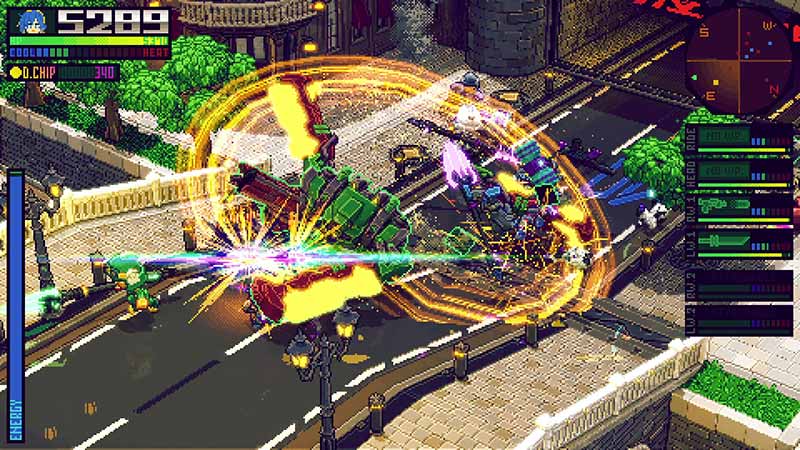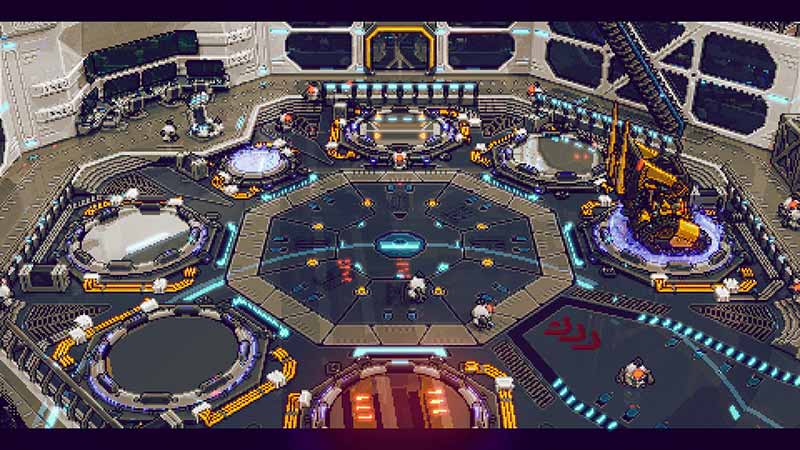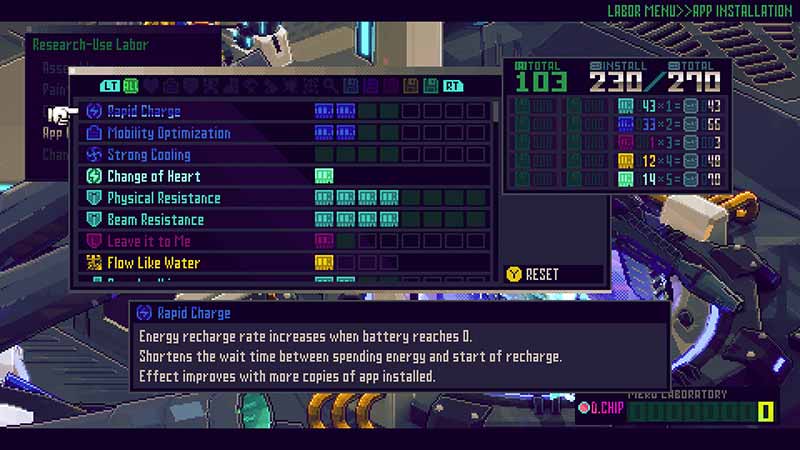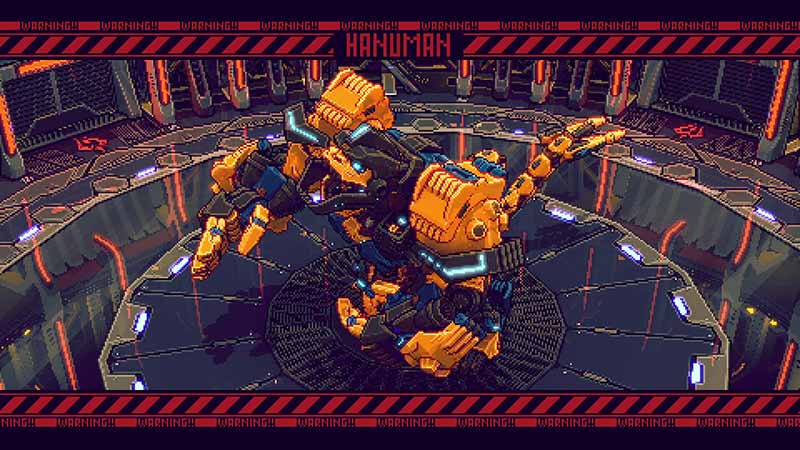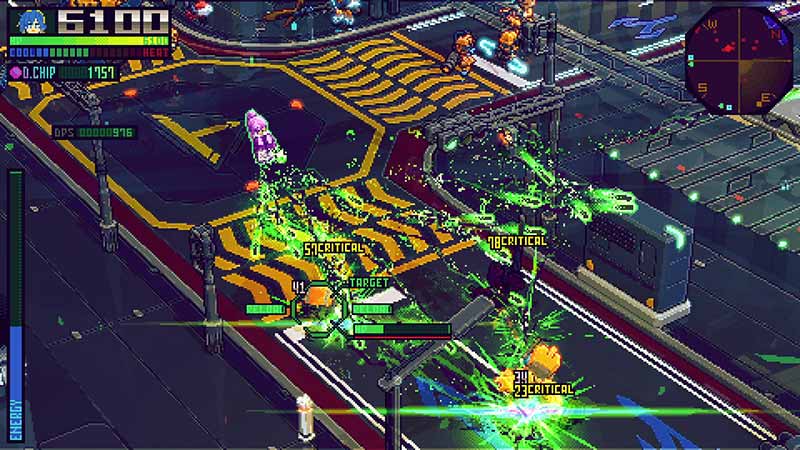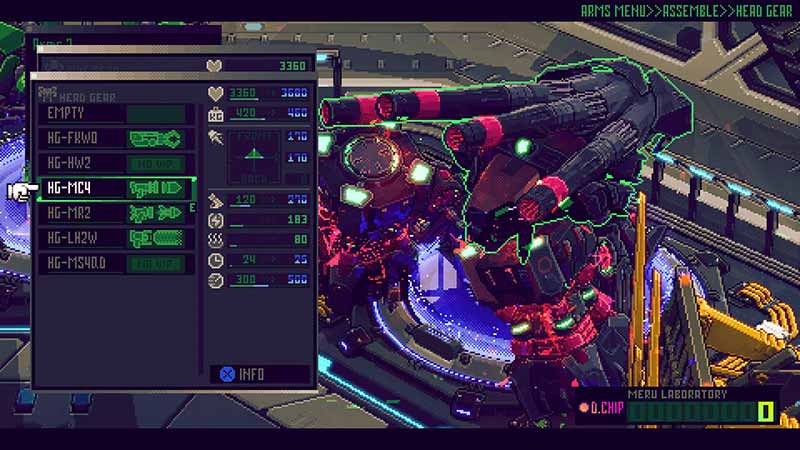METAL BRINGER GAMEPLAY
Combat Mechanics in Metal Bringer

Metal Bringer offers an exhilarating combat system that blends fast-paced action with strategic decision-making. As you control your Labor units in Metal Bringer, you'll engage in dynamic battles against various enemy types, each requiring different tactical approaches. The combat in Metal Bringer focuses on fluid movement and responsive controls, allowing players to execute devastating combo attacks, dodge enemy strikes, and counter at the perfect moment. Metal Bringer's combat depth comes from its variety of weapon types - from rapid-fire energy weapons to devastating melee armaments, each offering unique playstyles within Metal Bringer's world. The game's difficulty scales progressively, with early Metal Bringer encounters teaching basic mechanics before introducing more complex enemy patterns and boss fights that will test your mastery of the Metal Bringer combat system. What makes Metal Bringer's combat particularly engaging is how it changes based on your customization choices, creating a personalized experience that evolves throughout your Metal Bringer journey.
Roguelike Elements of Metal Bringer
Metal Bringer embraces the roguelike genre with procedurally generated environments that ensure no two playthroughs are identical. Each run in Metal Bringer presents new challenges, enemy placements, and resource distributions, keeping the experience fresh and unpredictable. When your Labor falls in battle during a Metal Bringer run, you'll restart with a new unit, but the knowledge and certain upgrades you've acquired carry over, creating that addictive "just one more run" feeling that Metal Bringer excels at delivering. The roguelike structure of Metal Bringer encourages experimentation with different builds and strategies, as certain combinations might prove more effective against specific challenges you'll encounter. Metal Bringer's difficulty curve is carefully balanced to provide a challenging experience that feels fair, with each death teaching valuable lessons about enemy patterns and optimal approaches. The game's procedural generation in Metal Bringer is sophisticated enough to create coherent environments that feel purposefully designed rather than randomly assembled, enhancing the immersion of Metal Bringer's mysterious world.
Exploration in Metal Bringer's World
Metal Bringer features a vast and mysterious world waiting to be explored, with diverse environments ranging from abandoned laboratories to strange alien landscapes. As you venture through Metal Bringer's world, you'll discover hidden areas containing valuable resources, powerful equipment, and fragments of lore that piece together the game's intriguing narrative. The exploration in Metal Bringer is rewarded through a variety of collectibles and secrets that enhance both your understanding of the world and your Labor's capabilities. Metal Bringer encourages thorough exploration by hiding some of its most powerful upgrades off the beaten path, tempting players to risk venturing into more dangerous territories. The world of Metal Bringer changes subtly with each run, with certain landmarks remaining consistent while other areas transform, creating a sense of familiarity mixed with discovery. Environmental hazards in Metal Bringer add another layer to exploration, requiring careful navigation and sometimes specialized equipment to safely traverse certain areas of the game's expansive world.
Boss Encounters in Metal Bringer
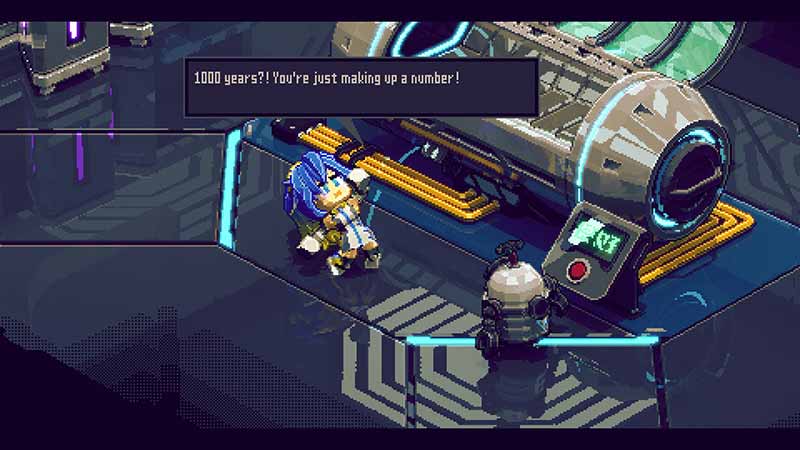
Metal Bringer features epic boss battles that serve as significant milestones in your journey, each presenting unique challenges that test your mastery of the game's mechanics. These formidable adversaries in Metal Bringer have distinct attack patterns and vulnerabilities that require specific strategies to overcome, encouraging players to adapt their approach based on their current build. Many bosses in Metal Bringer undergo phase transitions during battle, dramatically altering their behavior and abilities as their health decreases, keeping players on their toes throughout the encounter. The visual design of Metal Bringer's bosses is spectacular, with imposing mechanical monstrosities that tower over your Labor, creating memorable showdowns that feel appropriately climactic. Defeating these powerful enemies in Metal Bringer rewards players with significant upgrades, rare components, and crucial story revelations that drive the narrative forward. The boss fights in Metal Bringer are carefully balanced to provide a substantial challenge without feeling unfair, serving as satisfying tests of the skills and knowledge you've accumulated throughout your Metal Bringer adventure.
Control Systems in Metal Bringer
Metal Bringer features an intuitive control scheme that allows players to easily execute complex maneuvers while maintaining precise control over their Labor and Arms units. The game supports both keyboard/mouse and controller inputs, with Metal Bringer's interface automatically adapting to display the appropriate button prompts based on your chosen input method. Metal Bringer's controls are fully customizable, allowing players to remap buttons and adjust sensitivity settings to create their ideal control configuration for maximum comfort during extended play sessions. The game implements a smart targeting system that helps players focus on priority threats in Metal Bringer's often chaotic battle scenarios, while still allowing for manual precision when needed. When piloting different types of units in Metal Bringer, the control scheme subtly adapts to reflect the unique movement capabilities and combat styles of each Labor or Arms type, adding another layer of variety to the gameplay experience. Metal Bringer's developers have paid special attention to control responsiveness, ensuring that inputs feel tight and precise even during the most intense combat encounters.
